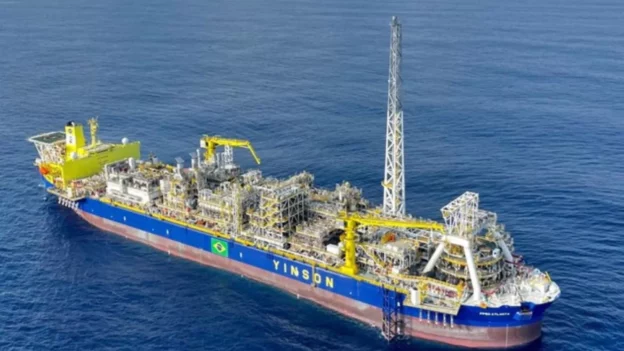A floating production, storage and offloading (FPSO) vessel has arrived in Brazil, where anchoring operations are underway to enable its operation in an oil field in the Santos Basin.
FPSO Atlanta begins anchoring in Santos Basin
As reported by Enauta of Brazil, the FPSO arrived in the Santos Basin on May 11, complying with the established schedule. Subsequently, after inspection and authorization by the competent authorities, the vessel began its anchoring operations, progressing in accordance with the initial oil production objectives.
In addition, the Atlanta FPSO has the capacity to process 50,000 barrels of oil per day and 140,000 barrels of water per day, with the possibility of storing up to 1.6 million barrels of oil. This unit is leased and operated by Yinson Production, a Malaysia-based company.
On the other hand, following the naming ceremony of the FPSO at Dubai Drydocks World in December 2023, the vessel departed the shipyard in March, crossing several oceans to Brazil. It is expected that oil oil production to start in August 2024, initially with six wells in operation, and is expected to reach ten wells by 2029.

FPSO Atlanta on its way to Brazil. Source: Enauta.
Brazil increases offshore production
The vessel was secured for the Atlanta Full Development System (FDS) in 2022, and. Yinson Production exercised its option to purchase the Atlanta FPSO in July 2023. Although the assignment of the vessel in the Brazilian field is for a 15-year period, it also includes an additional five-year option.
Similarly, the activities in the Atlanta field are part of Enauta’s plans to replace the Petrojarl I vessel, currently operating in the field, with the FPSO Atlanta. This offshore field, located in block BS-4 of the Santos Basin, is fully operated by Enauta Energía, a wholly owned subsidiary of the parent company, which also owns 100% of this asset.
The arrival of the FPSO Atlanta reinforces Brazil’s ability to manage and expand its deepwater hydrocarbon production. This initiative is part of a broader strategy to increase the country’s energy self-sufficiency and make the most of its vast natural resources.
Follow us on social networks and don’t miss any of our publications!
Inspenet.com YouTube LinkedIn Facebook Instagram X
Source and photo: offshore-energy


